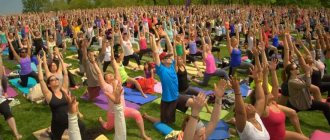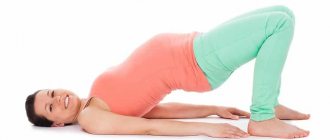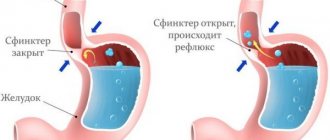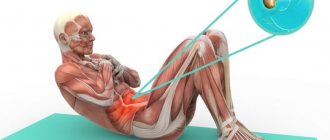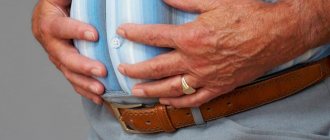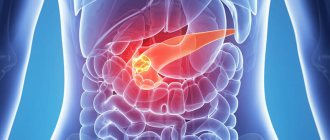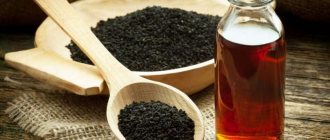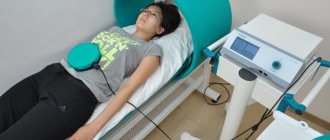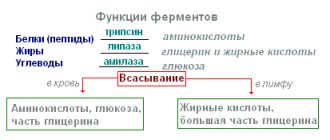Physical inactivity is the main cause of many diseases, including those of the digestive system.
Therefore, in their treatment, more and more attention is paid to therapeutic exercises. Movements stimulate blood circulation in organs, improve their condition and function. In particular, exercise therapy for gastritis, which affects more than half of the population, contributes not only to rapid recovery, but also to the prevention of exacerbations. A set of exercise therapy exercises for gastritis not only helps to normalize the secretion of gastric juice and the movement of food. Blood circulation in the abdominal cavity, in all organs and tissues of the body improves, and the body's resistance to diseases, including the digestive system, increases.
Gastritis and exercise therapy
Gastritis is a disease when the functioning of the gastric mucosa is impaired, preventing many people from living a full life. Eternal stress, poor diet, alcohol and cigarettes become the cause of disease for every person on earth. Mostly people lead an inactive lifestyle, affecting the body irreversibly.
Many people believe that all diseases, including gastritis, can be treated exclusively with pills and diets. Therapeutic exercises for gastritis greatly help restore strength and put the digestive organs in order.
Gastritis causes unpleasant pain in the stomach, which greatly changes the joys of life into frustration. Many types of gastritis can be cured with medications and diets, but the advantage of exercise therapy for gastritis is that the effectiveness of treatment will increase, and the number of pills taken will be significantly reduced. The liver becomes unloaded. If a person has gastritis and wants to exercise, it is useful to familiarize yourself with the course of exercises and the intricacies of implementation.
Contraindications
The exercise therapy complex for gastritis is not prescribed in cases of the acute stage or exacerbation of a chronic disease, when the following symptoms are expressed:
- severe abdominal pain;
- persistent, painful heartburn;
- constant nausea;
- frequent vomiting;
- increase in body temperature.
In such cases, only breathing exercises are indicated, because such patients are often prescribed gentle semi-bed rest. Exercise is possible after acute symptoms subside on the recommendation of a doctor.
What exercises are suitable for gastritis?
First, you need to undergo examinations and find out the type of gastritis of the patient. Heavy exercise when suffering from any form of gastritis is harmful. Improper physical activity inhibits the direct duties of the stomach, leading to improper digestion. If the regime is built correctly, it will be possible to eliminate problems in the body with the help of gymnastics.
Gymnastics for gastritis will help restore the digestive system, improve blood circulation in the walls of the stomach and strengthen the abdominal muscles.
What else can you do?
There is an opinion that if you have gastritis, you need to forget about the existence of fitness and sports. Unless you include therapeutic exercises in your daily routine. But such a statement is incorrect.
- If you have a disease in the chronic stage, it is quite possible to ride a bicycle, take active walks, do yoga and even jogging or Nordic walking.
- Swimming, skating and other winter sports, and massage will provide no less benefit to your body.
- Home meditation and inhaling aromatic oils will not hurt. Such rituals allow you to calm the central nervous system and relieve internal tension. But it’s no secret that stomach pain is often caused by nervousness.
Carrying out physical therapy for gastritis is an effective way to improve your well-being and get rid of severe pain. Follow moderation in everything and do not forget to take medications prescribed by your doctor and follow a healthy diet.
Source
How does exercise therapy help?
In order not to cause harm when doing physical exercise, it is better to find out the cause and type of your own illness. Based on the diagnosis, certain exercise therapy sessions are prescribed to cope with pathological processes. The exercises will give a greater effect and will not become a new cause for another disease due to diligence or improper execution of the exercises.
How does the body respond to exercise therapy? When performing exercise movements, the abdominal muscles contract, massaging the abdominal organs. If the exercises are performed correctly, the performance of organs improves. This is especially true for the work of organs with impaired peristalsis. During physical activity, food and feces begin to move in the intended direction. Physical education helps improve the nervous, cardiovascular and respiratory systems, leading to the recovery of the gastrointestinal tract.
Exercise therapy has a direct and indirect effect on the problem of gastritis.
The direct effect is to stimulate through exercise, motility and secretory activity of the gastrointestinal tract, accelerate metabolism and improve cell nutrition. By contracting in a certain way, skeletal muscles, in our case the abdominal muscles, provide a kind of massage to the abdominal organs, which in reasonable quantities has a beneficial effect on their work. Exercise therapy is of particular value for the functioning of organs that have peristalsis, namely the stomach and intestines. Physical activity contributes to the proper movement of food and feces through the digestive tract, and this is one of the conditions for the health of these organs.
Therapeutic exercise plays an important role in normalizing the outflow of bile and the secretion of pancreatic enzymes.
The indirect effect is to improve the functioning of systems and organs whose work affects the functioning of the gastrointestinal tract. This is for example:
- toning and training of the central nervous system (CNS);
- training of the cardiovascular and respiratory systems;
- improvement of nerve connections between the central nervous system and internal organs (cortico-visceral connections).
Rules for abdominal breathing during the gastrointestinal tract
In principle, there can be no harm from proper breathing: it would be a very strange act on the part of nature to force a person to harm himself with the help of one of the main life support mechanisms.
The benefits of abdominal breathing are as follows:
- the entire volume of the lungs is used, thereby improving their natural ventilation;
- the functioning of internal organs improves due to massage with the diaphragm;
- blood is better saturated with oxygen;
- muscle tension in the pelvic and abdominal areas is relieved, which has a beneficial effect on the mental state and the ability to withstand stress;
- the functioning of the gastrointestinal tract improves.
The positive effects of training are achieved by tensing the muscles in the abdominal area, so you can check the correct technique. Under no circumstances should the abdomen be pulled in, as this will return breathing to the upper chest.
The second important stage of proper breathing is relaxation of the diaphragm. In a relaxed state, the muscle naturally takes the correct position. This is achievable under the only condition: you feel the work of the muscle, understand its structure and function, and can consciously control it.
The process of establishing correct breathing will be associated with changing existing habits and at first may cause unpleasant sensations in the body. This primarily concerns the increase in blood pressure in the vessels and ventilation of the lungs. Both can lead to poor health, dizziness, and nausea. To prevent this from happening, you need to exercise carefully, dose the load, and monitor your well-being.
Breathing rules for gastrointestinal tract:
- You should exercise 2 times a day for no longer than 10 minutes per session;
- You should start training with exercises in a lying position, moving to other positions only as you master the technique;
- It is advisable to train outdoors or in a well-ventilated area;
- it is important to monitor your breathing rhythm;
- exhalation and inhalation should be measured, with the exhalation always longer than the inhalation.
Sources:
- https://pink.rbc.ru/fitness/5cb767129a7947d492a4eb0b
- https://works.doklad.ru/view/V-pJ9wWP-nM/all.html
- https://gigabaza.ru/doc/142165-pall.html
- https://gastritinform.ru/ezoterika.ru/lechebnyiy-tsigun-kak-vyilechit-gastrit/
- https://www.teatr-benefis.ru/staty/diafragmalnoe-dyhanie-uchimsya-dyshat-pravilno-is-polzoj-dlya-zdorovya/
Universal exercise therapy for chronic gastritis and stomach ulcers
Even when eating the right dietary foods, a person suffering from gastritis is not immune from exacerbation of the disease. In addition to following the doctor’s recommendations and taking pills, it won’t hurt to perform special exercise therapy exercises:
- Stand straight, feet shoulder-width apart. Slowly rotate your head in a full circle. Repeat 5 times and the same number in the opposite direction.
- The starting position is the same. Stretch your arms forward, rotate your hands to the left and to the right. Repeat the movement 8 times at a slow, steady pace.
- Stand up straight, relax your arms and place them along your body. Alternately bend your knees, lifting your heel off the floor. Repeat the movement 5 times on each limb. Now roll from toe to heel (up to 15 times).
- Sit on a chair, keep your hands on your waist. Slowly lean to the sides. Repeat 8 times.
- The next exercise is performed while sitting on a chair with a high back. You need to “walk” in place, raising your knees high. Continue this walk for 30 seconds.
- Lie on your back. Raise your legs one at a time. In this case, the limb should be straightened and taut (at the maximum point, the toe looks at the ceiling). Breathe evenly and calmly. Repeat 15 times for each leg.
- The starting position is the same. Perform the “bicycle” movement for 2 minutes. First pedal forward and then in the opposite direction.
- It is no less useful to do the Cat exercise for chronic gastritis. Get down on all fours, take a slow breath, and then as you exhale, bend your back as much as possible and lift your pelvis up. Stay in this position for a few seconds, and then hunch your back, tightening your stomach. Repeat the pose borrowed from yoga 5-7 times.
The complex may include the following exercises for exercise therapy:
- Lie on your back, stretch your arms along your body. Touch your shoulders with your hands, open your arms. Breathe in. Then touch your shoulders again and place your arms along your body. Repeat the movement 5 – 7 times.
- We're lying on the floor. As you inhale, raise your knee to your stomach. Let's exhale. We return to the starting position. We repeat the movement 5 – 7 times with each leg.
- Lying on your back, bend your legs at the knees. Then we spread our knees and move them, returning to the starting position. We repeat the movement 10 - 12 times.
- We turn on the right side. Inhale and pull the knee of the left leg towards the stomach, and move the left arm back. We exhale and come back. Repeat the exercise 8 – 10 times. Turn on your left side and repeat the set of movements.
- We get on all fours. We take the leg back and return it. Repeat the exercise 5 – 7 times.
- We continue to stand in the previous IP. We raise our right leg and left arm and lower it. Repeat the movement with the other leg and arm respectively. Perform the exercise 5 – 7 times.
- We sit down on a chair. They wrapped their hands around her waist. We perform body turns left and right. We repeat the exercise up to 10 times.
- We continue to sit on the chair. Raising your arms in front of you, raise your leg. We do the exercise with the other leg. Repeat the exercise 5 – 7 times.
- We stand with our feet shoulder-width apart and arms out to the sides. We try to turn around to see the wall behind us. You need to make sure that your heels do not come off the floor. Inhale and return to the starting position. Repeat similarly in the other direction. The exercise is performed 5 – 7 times.
- We're standing. Feet shoulder-width apart, arms spread to the sides. We bend over and touch the toe of our left foot with our right hand. The left hand rises up at the same time. Repeat similarly with the other hand. The exercise is performed 5 – 7 times.
Exercise sets
The subacute period begins after the symptoms of irritable stomach (pain, nausea, vomiting) subside. This usually happens 10 days after the exacerbation. Therapeutic gymnastics prescribed by a physical therapy specialist meets the following requirements: the duration of one lesson is 10-12 minutes. load – below average; inclusion of breathing exercises in a complex; excluding exercises on the abdominal muscles.
After 5-6 sessions, provided the patient’s condition improves, a full set of exercises can be performed. The list of exercises is compiled depending on the state of the secretory function of the stomach.
What loads are contraindicated?
It is useful to do pull-ups on horizontal bars and do push-ups on uneven bars. Bodyweight training strengthens the diaphragmatic muscles and ligaments.
Sports prohibitions:
- Only patients with healthy sphincters pump their abs. Abdominal training causes a sharp increase in pressure in the abdomen. After such exercises, 9 out of 10 patients complain of exacerbation of esophagitis.
- Limiting free weight for training. Do not lift or bend over weights. Weight training helps relax the diaphragm muscles, as well as increase intraperitoneal pressure.
- Dynamic aerobics is allowed only during the period of complete remission. If the sphincters fail, active movements provoke acid reflux, aggravating the course of esophagitis.
For reflux esophagitis, therapeutic exercises are indicated, as well as non-intensive training without weights.
With decreased secretion
Physical exercises for gastritis and the load on the body depend on the disease. If acidity is increased and exercise is performed for too long, there is a tendency for gastric juice to decrease.
Gastritis with low acidity requires low physical activity with average energy, it is advisable to repeat the exercises infrequently. Slowly but steadily, blood flow to the walls of the stomach increases. Classes last no longer than half an hour. Better in a group with musical accompaniment. A joyful and energetic environment will affect the body as a whole. Basic exercises include abdominal strengthening and breathing training. It is worth adhering to the rules: you need to exercise one and a half or two hours before or after meals, drink after exercise 30 minutes later.
Therapeutic gymnastics in this case is aimed at regulating the processes of juice secretion, improving metabolism, activating blood circulation in the abdominal cavity, and stimulating the motor function of the stomach. Exercises must be performed 1.5-2 hours before meals and 20-40 minutes. before drinking mineral water. The set of exercises must comply with the following principles:
- lesson duration 20-25 minutes;
- load – medium, with a small number of repetitions (3-4 times [4]);
- the pace of exercise is average (pulse should not exceed 150 beats/min);
- Be sure to include breathing exercises and exercises for the abdominal muscles in the complex.
Exercise therapy for gastritis with low acidity and a chronic course of the disease may include the following exercises:
- In a standing position, nod your head up/down, then left/right. Repeat 10 times.
- In a standing position, make rotational movements with your hands extended forward, first in one direction, then in the opposite direction (the number of repetitions of the exercise is 10 times).
- Slowly raise/lower your arms from side to side with synchronized arm movements and breathing (8 repetitions).
- With your arms down, alternately raise your knees 10 times to a perpendicular position.
- When standing, pumping movements from toes to heels and back - 15 exercises.
- Sitting on a chair, bend the body sideways to the maximum possible amplitude (7 times).
- Sitting on a chair, make movements with your legs that imitate walking for 30 - 40 seconds.
- In a supine position, raise/lower the head, synchronized with inhalation/exhalation – 6 times.
- Lying on your back, simultaneously raise your arm and knee up without lifting your foot off the floor, then lower your limbs. Changing hands, perform the exercise 10 times.
- In a lying position, alternately raise your legs without bending your knees (8 exercises).
- The same exercise, complicated by raising the torso with support on the elbows - 6 times.
- In a lying position, simulate riding a bicycle for 40–50 seconds.
- In a pose of standing on all fours, simultaneously with raising your head, throw one leg forward, alternating the exercise with the other leg 10 times.
- In the same position, alternately raise your left and right arms to your side with a 3-second delay in a horizontal position (10 times).
- Standing on all fours, alternate bending your torso down and up while simultaneously raising/lowering your head.
Or this set of exercises:
- We stand with our feet shoulder-width apart. Raise your leg back, arms up. Make sure your leg remains straight. We repeat the exercise 3 – 4 times. We change the limb.
- We're standing. We turn the body to the left, then to the right. When turning, open your arms to the sides, and when returning, close your arms. Do the exercise 3 to 4 times.
- We continue to stand. We bend left and right, 3 to 4 times.
- We're standing. We lean forward. You need to do 3 - 4 tilts.
- We're standing. We take a deep breath and hold our breath for a while. Let's exhale. Repeat 5-6 times.
- We sit on the floor. From behind we rest well on our hands. Legs extended. We bend at the lower back. We repeat the exercise 4 – 6 times.
- We sit on the floor. Raise your leg and make sure you are straight. We do the exercise 4 – 6 approaches.
- Exercise "bicycle". Completes in no more than 30 seconds.
- We stand up, inhale deeply, hold our breath and finally exhale. The exercise is repeated 5 – 6 times.
- Now we lie down on our stomach. We bend our arms. Repeat the movement 5 – 10 times.
- We stand with our feet shoulder-width apart. Let's start squatting. Do 5 – 15 times.
- We stand with our feet shoulder-width apart. Raise your leg 90 degrees. Keep it straight. Lower it. Repeat the movement 4 to 6 times with each limb.
- We sit on the floor near the wall. We rest our feet against the wall. Lean back. Repeat the exercise 4 – 5 times.
- Sitting on the floor, place one hand on your chest and the other on your stomach. Slow down your breathing.
- We get on all fours. Raise your left arm and right leg. We lower it. Repeat the exercise with the other arm and leg respectively. Perform the exercise 3 – 8 times.
- Let's get up. Jump up high. You need to do 15 – 60 small jumps.
- Time yourself for 2 minutes and perform the steps on the spot.
- Breathe deeply.
The exercises are performed in order in the specified sequence. The exercises begin slowly, and the pace increases during exercise.
Video on the topic:
Breathing exercises for GERD
> What is GERD > Facts about GERD
There are many remedies for the treatment of gastroesophageal reflux in order to get rid of annoying unpleasant symptoms forever or at least for the next decades. For prevention, it is not necessary to use medications; it is enough to periodically follow a diet and change a few things in your lifestyle.
Another preventive remedy is breathing exercises for GERD. This is another attempt to protect against a disease, which in the general arsenal of a suffering person can turn out to be a completely effective method.
Gymnastics is not a cure
Before completely switching to this type of help, everyone should understand some important points for themselves:
- gymnastics does not relieve heartburn, this method only helps speed up the healing process or reduce the periods and number of exacerbations;
- there is no ideally developed exercise scheme, everyone can choose for themselves those that will subsequently provide real help to them;
- Gymnastics for GERD is a non-main method of treatment; without the combined use of medications and if the diet is not followed, the exercises will not be effective;
- There is no 100% guarantee that classes will have a positive effect on the process of getting rid of reflux disease; do not have any illusions about a happy, full recovery.
At the moment, there is no complex selected for each disease of the digestive system. These are most often general exercises that will not save you in an emergency situation, but they can alleviate the course of the disease.
Tasks that therapeutic gymnastics copes with
Like any physiotherapeutic method (gymnastics can rather be classified as exercise therapy - physical therapy), it should be selected individually, taking into account load tolerance and the course of the disease process. Due to which physical therapy has a positive effect:
- the body's defenses are stimulated and have a general strengthening effect on a person;
- with any exercise, the muscular system and blood vessels develop well, which provides greater nutrition to the surrounding tissues and promotes the regeneration (healing) of damaged layers;
- if gymnastics for reflux esophagitis is chosen well, you can strengthen the lower esophageal sphincter (the round muscle between the esophagus and the stomach), the weakness of which leads to the reflux of food;
- sometimes exercises help reduce the number of refluxes at night, improve the absorption of drugs, and reduce their intolerance.
But, as stated, this is not a magic pill for all symptoms associated with GERD.
Breathing exercises
The basis of such treatment is proper breathing, which can be either an independent exercise or, together with other types of exercise, an attempt to train the internal organs.
- First you need to take a comfortable position - preferably standing or sitting. Then you need to take a deep breath and exhale slowly. When exhaling, try to use the muscles of the abdominal cavity (“exhale using the stomach”), this way the respiratory muscles, which are located closer to the stomach, work better. This exercise must be repeated 3-4 times.
- Breathing exercises for reflux esophagitis also include the following exercise: calm, deep inhalation and quick exhalation through the “stomach.” The number of exercises increases to 10.
- Then you can take a deep breath, hold your breath and at the same time try to “squeeze” your abdominal muscles as much as possible, pause for 5 seconds and exhale calmly. Over time, it is worth increasing the pauses to 10–15 seconds.
- Another option for exercises is a calm inhalation and a forced gradual exhalation, as if you have to exhale several times.
Gymnastics classes should be accompanied by pauses for rest; frequent and deep inhalations and exhalations can lead to dizziness, and in some cases to loss of consciousness. Therefore, speed is not the main thing in this treatment.
Important Prohibitions and Cautions
As with any sport, such gymnastics has its own requirements:
- during severe GERD, gymnastics should be postponed until the severe symptoms subside;
- do not carry out this treatment after a full meal, a light snack or even a sip of water, this will only weaken the esophageal sphincter;
- All movements must be carried out in a calm state; they cannot be performed lying down or half-sitting.
Gastroesophageal reflux disease can worsen 2-3 times a year, so gymnastics should be a way to prevent it. It is better to conduct classes at least twice a week.
Do not try to develop a set of exercises on your own; it is better to consult a gymnastics instructor. The ideal option is when a specialist works in a medical institution and is familiar with the specifics of working with diseases.
You should not rely only on breathing exercises; it does not exempt you from other types of activities. It is better to combine them with swimming, walking, and light jogging.
The exercises are carried out without load, the hands should be free, the muscles of the limbs or back are not trained, but the internal organs are stimulated.
How to diversify prevention and treatment methods for reflux esophagitis? You can add therapeutic exercises to the complex. It will not harm the course of the underlying disease, but will only help and alleviate many of its manifestations.
Loading…
Source: https://izzhoga.com/gimnastika-pri-gehrb/
With increased secretion
If gastritis is with high acidity, do the exercises slowly and monotonously, but more complex. The exercise activity gradually increases. The classes necessarily include breathing and relaxation exercises. The exercises are often repeated, physical exercise on the abdominal muscles is practically not used, for fear of stomach pain. If pain occurs, you should absolutely not exercise.
Therapeutic gymnastics in this case is aimed at restoring the functions of the nervous system. Positive emotions are an important condition for the rehabilitation of patients with this disease. Exercises should be performed immediately before meals, after drinking mineral water.
The set of exercises must comply with the following principles: load – above average, with a large number of repetitions (5-6 times); the pace of the exercises is slow, monotonous (pulse should not exceed 120 beats/min); be sure to include breathing exercises in the complex; the load on the muscles of the anterior abdominal wall is minimal; starting from day 15, coordination exercises and various types of cyclic loads are added.
Physical exercises for gastritis with increased secretion of hydrochloric acid:
- In a standing position, make rotational movements with your head clockwise/counterclockwise (10 times).
- In a standing position, with your hands extended forward, perform rotational movements clockwise and counterclockwise - 10 exercises.
- With your elbows bent and your hands pressed to your shoulders, move upward and back to the starting position (10 repetitions).
- The same starting position, throwing your arms forward, then to the sides, returning to IP. Repeat 10 times.
- The same IP, simultaneously with lowering your hands onto your belt, move one of your legs to the side, alternately perform 7 times.
- In a sitting position, place your hands on your belt, then, while tilting your torso to the side, raise the opposite arm up. Alternate the exercise 6 times for each hand.
- Lying on your back, alternately pull your legs bent at the knee towards you, without lifting your feet from the floor, 10 exercises for each leg.
- In the same position, raise your legs at the same time. 10 exercises.
- With your knees bent (in a lying position), make inclined movements in one direction, then in the opposite direction (10 times).
- In a lying position, simultaneously raise your right arm and left knee without lifting your foot off the floor, then lower your limbs. Changing hands, perform the exercise 8 times.
- Lying on your back, rest your hands on your elbows, your legs should be bent at the knees. Alternately raise your left arm to the side while simultaneously lowering your right leg, then perform the same operation with the opposite limbs (6 times).
- Lying on your right side, raise the knee of your left leg, pressing it to your chest. Repeat five times, turn over to the opposite side, perform five more movements.
- Standing on all fours, while raising your head, throw one leg forward, alternating the exercise with the other leg 10 times.
- In the same position, alternately raise your left and right arms to the side with a 3-second delay in a horizontal position (10 times).
Or a set of exercises could be like this:
- We sit on the floor, begin to clench our hands and feet, then unclench them. You need to repeat the action 10 - 40 times.
- The movement is performed while sitting. Turns the body left and right. With each turn, you need to open your arms, return to the starting position, and close them. The exercise is performed 3 – 6 times.
- We continue to sit, slowly raise our leg and lower it. Make sure your legs are straight. Do it one by one. Repeat the exercise 3 – 6 times.
- We continue to sit, legs spread as wide as possible. We bend over to the leg, reach for our toes with our hands, and rise back up. Same with the second one. Repeat 3 – 6 times.
- We sit on the floor, legs extended straight. Bend your leg at the knee, bring it closer to your chest, and slowly lower it back. We repeat the exercise with the second leg. Do 3 – 6 approaches.
- Now use your imagination and take a position as if you were sitting on a chair. This is the starting position. Squat down, then return to the starting position. Repeat the exercise 4 – 12 times.
- We sit down and relax the ankle muscles.
- Now we lie on our backs and bend our legs. We stretch forward, put our hands behind our heads. Perform the exercise 4 – 6 times.
- Turn onto your side. We take our leg back and at the same time raise our arm up. We repeat the movement from 3 to 8 times.
- We return to the back. Raise the straightened leg up and slightly to the side. We do the exercise 3 – 8 times. We change the leg.
- Get on all fours. Raise your right leg and left arm. Replace the arms and legs accordingly. Do 3 to 8 times.
- Walk in place for a maximum of 2 minutes.
- We sit down and put one hand to the chest, the other to the stomach. We breathe slowly.
It is worth noting that a set of exercise therapy exercises for gastritis can be supplemented with a special therapeutic massage, which is carried out taking into account the diagnosis. So, with increased gastric secretion, the massage should be more gentle, with a deficiency of hydrochloric acid - more active and energetic.
Physical therapy for high acidity affects large and medium muscle groups, but pressure on the abdominal muscles should be avoided. Exercising your abs with gastritis with high acidity means increasing the number of unpleasant symptoms. The main thing here is the monotony of movements with many repetitions. It is necessary to avoid sudden movements of the limbs and torso, as this may affect the deterioration of general well-being. Such exercises also have contraindications.
It is not recommended to pay attention to exercise therapy for gastric ulcers, in the presence of symptoms such as nausea and vomiting, and severe bleeding. Such symptoms should prompt immediate medical attention. You can do physical therapy at home, without ignoring other treatment methods. The effectiveness of such training in the fight against gastritis has long been proven, but their capabilities should not be overestimated.
Gastritis is a serious and dangerous disease that develops quickly in the absence of proper treatment, so physical education alone will simply not be enough to combat it.
What can cause gastritis with low acidity?
Gastritis with low acidity mainly affects fairly mature people. The disease occurs as a result of prolonged use of alcohol or poor diet over many years.
People with thyroid disease and weakened immune systems are more susceptible to developing gastritis.
The most characteristic symptoms of gastritis of the stomach include discomfort in the intestines after any meal, which is associated with loss of appetite and body weight.
Main signs of stomach disease:
Gastritis? Ulcer? To prevent a stomach ulcer from turning into cancer, drink a glass...
The best FOLK remedy for GASTRITIS and stomach ulcers!
- after eating any food, there is a feeling of pressure on the walls of the stomach from the inside;
- nausea and vomiting throughout the day;
- belching with a rotten taste (as opposed to increased acidity, which is accompanied by sour belching);
- stool instability, diarrhea;
- flatulence;
- weight loss and appetite;
- anemia;
- white coating on the tongue;
- hair loss, nails become brittle.
It should be noted that the latest symptoms of gastritis appear due to the loss of beneficial elements that are not absorbed along with food.
Also, do not forget that the patient may not have all the signs, but only some of them.
The disease develops quite slowly, and almost all symptoms are quickly eliminated if gastritis with low acidity is treated in time.
It is for this reason that if you find signs of gastritis, then immediately consult a gastroenterologist: the sooner treatment begins, the more effective it will be.
If gastritis occurs for the first time, it is usually called acute.
In the absence of correct and timely treatment, the patient will already have chronic gastritis, and its treatment will take much longer.
Chronic gastritis is characterized by symptoms such as a feeling of fullness in the stomach after any amount of food, belching and frequent heartburn.
Without treatment, a chronic type of disease can turn into atrophic gastritis with low acidity.
Treatment of gastritis
Before starting treatment for gastritis with low acidity, laboratory tests are carried out, which not only confirm or refute the diagnosis made by the gastroenterologist, but also help to find out the degree of damage to the mucous membrane, the amount of enzymes and the level of acidity.
The course of treatment and restoration of the stomach depends on these data.
Treatment of gastritis with low acidity consists of increasing the secretory function of the stomach and restoring damaged areas of the mucosa.
Video:
If gastric secretion is reduced but preserved, then the gastroenterologist prescribes stimulating therapy; if symptoms of secretory insufficiency appear, then the doctor recommends replacement therapy.
Medicines for the treatment of the stomach:
- stimulating therapy: this group includes drugs such as Histaglobulin, Etimizol, Calcium Gluconate, Pentagastrin, Limontar, etc.;
- Replacement therapy: the drugs Panzinorm forte, Pepsin, Acidin-pepsin, Pepsidil are used for treatment. Preparations with a solution of hydrochloric acid and the product Gastric Juice, which includes all the enzymes necessary for the stomach, are also used;
- exacerbation of gastritis of the stomach is treated with medications: No-shpa, Venter, Spasmol, Drotaverine;
- in order to get rid of the Helicobacter pylori bacterium, doctors prescribe antibiotic drugs: Omeprazole, Doxycycline, Tinidazole and Amoxicillin;
- to normalize the functioning of the stomach, Reglan, Cerucal, Clometol and other drugs with the main active ingredient metoclopramide are prescribed;
- To restore the vitamin balance, normalize metabolic processes and increase the activity of the glands, folic acid, Oligovit or Pangexavit are prescribed.
In addition to treatment with medications, doctors often recommend physical therapy for gastritis and be sure to adjust the patient’s diet.
Chronic gastritis, as a rule, is treated with longer diets and folk remedies; balneotherapy and mud therapy are also often used.
Dietary recommendations
A diet for gastritis with low acidity limits the consumption of the following foods:
- fatty fish;
- butter is allowed, but only a little;
- cabbage;
- strong tea;
- smoked products;
- pickles;
- spices;
- fatty dairy products.
It is better to eat bread slightly dried, or in the form of crackers without spices. Citrus fruits, various berries, soups with meat or fish broth, fried foods are allowed only a month after the last exacerbation.
Meals should include a variety of purees and cereals, light soups with vegetable or milk broth. All fruits for gastritis are best consumed pureed.
All dairy products, except cottage cheese, are welcome only in small quantities. Low-fat cottage cheese is very healthy due to its soft consistency and beneficial effect on the body.
Doctors also advise adding beans in any form, parsley, garlic and cilantro to your diet.
A diet for gastritis with low acidity involves reducing irritation of the gastric mucosa.
After this, you can eat foods such as pickled cucumbers and tomatoes, lightly salted fish, soups and borscht with rich broth in small quantities to increase the release of hydrochloric acid in the stomach.
Food for the prevention of gastritis should contain only natural food without chemical additives: flavorings, taste enhancers, etc.
Chewing food thoroughly will also be a good prevention. This is necessary so that when the food enters the stomach, it has already been sufficiently processed by saliva as a natural breakdown agent, otherwise the gastric juice will become too aggressive to the walls of the stomach.
Folk recipes
After you have adjusted your diet, take a course of treatment for gastritis with folk remedies. It is advisable to carry out such a course at least 4 times a year for treatment and 2 times for prevention.
Treatment of gastritis with folk remedies:
- Dissolve 1 teaspoon of honey in a glass of warm water. Drink the resulting solution 3 times a day: in the morning before meals, in the afternoon and in the evening 20 minutes before meals;
- add baked apples, fresh or dried apricots, grapes (100 - 150 g) to your daily diet 20 minutes before meals;
- Pour 0.5 liters of vodka with 15 ml of crushed calamus root (1 tablespoon) and leave to infuse. After a week, strain the tincture and take 30 minutes before meals, 3 times a day, 1 teaspoon;
Prepare or buy the following mixtures (the number of parts is indicated in brackets):
- marshmallow (3 tsp), flax seeds (2 tsp), watch (5 tsp), thyme (4 tsp), smokeweed (2 tsp), tansy (1 tsp), yarrow (2 tsp), knotweed (2 hours), dandelion (3 hours);
- elecampane (2 tsp), rhubarb (3 tsp), watch (5 tsp), birch leaf (3 tsp), calendula (3 tsp), dill seeds (1 tsp), flax seeds (2 tsp. ), walnut leaf (2 tsp);
- lingonberry leaf (2 hours), plantain (3 hours), strawberries (2 hours), watch (7 hours), oregano (3 hours), sage (4 hours), hops (1 hour), mint (2 tsp), chamomile (2 tsp), cumin (1 tsp).
These herbal mixtures need to be poured into 1 liter of water and left to infuse for a week. Take approximately 120 ml every day before meals 30 minutes. The course of herbal treatment for gastritis should be carried out for a month.
Another good folk remedy is baking soda for gastritis. Despite the popular belief that soda with low acidity is strictly contraindicated, this is not entirely true.
In fact, soda does not affect the amount of gastric juice secreted, so it can be taken by people with any stomach acidity. Video:
However, baking soda evens out the balance of acid and alkali in the body, improves cellular metabolism, stops the loss of potassium, and is also very useful for colds and headaches.
Before taking any medications or folk remedies for gastritis, be sure to consult a gastroenterologist and do the necessary tests.
Other forms of physical therapy
In the acute stage of the disease, all forms of exercise therapy are contraindicated. It is difficult to even do breathing exercises if you have stomach pain, nausea, vomiting, loose stools or constipation. After the symptoms subside, along with therapeutic exercises, you can introduce such forms of physical activity as walking, dosed running, swimming, cycling, skiing.
Video on the topic:
Rowing, health paths, outdoor games, and close tourism are widely used in sanatorium-resort treatment. The dosage of physical activity is carried out in accordance with the physical fitness of patients, the state of the cardiac and respiratory systems, as well as depending on concomitant diseases that limit physical performance.
Objectives of therapeutic gymnastics
The purpose of physical exercises in the treatment of gastritis is to normalize the secretion of gastric juice, ensure a normal time for food to remain in the stomach until it is completely processed, and eliminate the backflow of contents into the esophagus (with reflux gastritis). Gymnastics also helps regulate the timely entry of gastric contents into the intestines, preventing its delay or, conversely, too rapid evacuation.
Ultimately, this leads to a reduction or elimination of gastritis symptoms such as heartburn, a feeling of heaviness in the abdomen, nausea, belching, vomiting, epigastric pain, delayed or upset stool, and an improvement in overall well-being.
Harm and benefit
Healthy running for gastritis will be beneficial; while running, the digestive functions of the organs improve. Before going for a run if you have gastritis with a high level of acidity, it is useful to drink oatmeal jelly. Thanks to the drink, the walls of the stomach are coated, a film is formed, which helps lower the acidity level. If the acidity level is low, it is acceptable to drink half a glass of water.
Acid release will occur more intensely. It is also useful to go for leisurely walks after meals. Swimming, skating, skiing, and playing volleyball are allowed. Engaging in such sports develops physical abilities and improves the psychological state of the body.
A set of exercises for gastritis has contraindications. Follow the rules of execution.
Do not take part in health-improving physical exercises when an ulcer appears, especially during an exacerbation. Severe nausea and frequent vomiting are a contraindication to any type of physical exercise. If severe pain appears in the stomach area, you should not take up therapeutic exercises. If bleeding is observed or the disease occurs with stenosis, it is worth avoiding exercise therapy. You need to exercise when the digestive system is stable and there is no pain in the stomach.
During physical exercise, energy increases, the body is saturated with vitamins, and the level of acidity in the gastrointestinal tract is restored.
General rules for playing sports
You can start classes after consulting a gastroenterologist.
To achieve the most positive result of healing the body, it is necessary to choose the right areas of exercise therapy. This is possible only after establishing the correct diagnosis and consulting a gastroenterologist and a physiotherapist. Sports should be constant as a healthy habit. You need to do it with pleasure. Anything done through force and without desire will not bring any benefit. Classes are held between meals, no earlier than 1.5 hours after meals.
Instant results should not be expected. It takes about a month to notice results.
Therapeutic exercise is not allowed in the following cases:
- period of exacerbation of the disease;
- ulcers accompanied by bleeding;
- preperforative state;
- severe pain;
- decompensated stenosis.

